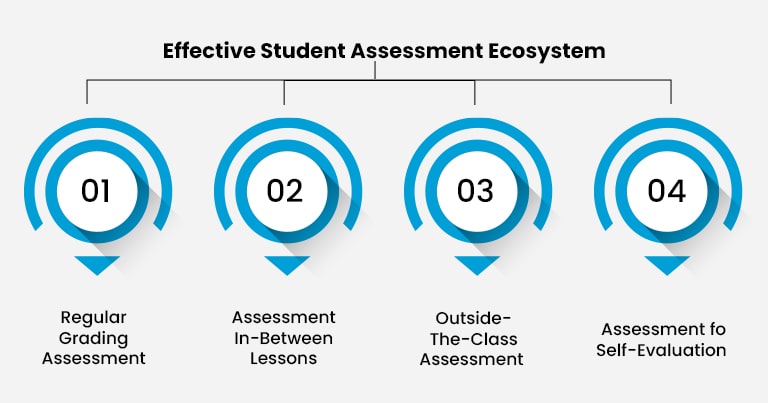Unlock Academic Success: The Impact of Tracking Student Progress
Without comprehensive student assessment and tracking student progress, the learning experience is incomplete.
As an educator, it is crucial to monitor the progress of our students to ensure they are meeting learning objectives and to pinpoint areas where they may need extra assistance. This process involves carefully observing and measuring their academic growth and development over time.
Various methods are employed to assess their grasp of complex concepts, identify areas of difficulty, and offer focused and focused support for improvement. These methods include evaluating their performance in tests, quizzes, and assignments, as well as observing their engagement and participation during class. Progress tracking goes beyond the classroom, extending to homework assignments and digital assessment platforms.
By doing so, educators can identify where students require additional help, provide personalized feedback, and adapt teaching strategies to help students achieve their academic goals.
Let’s discuss the different ways of tracking student progress.

1. Regular Grading Assessment
Regular assessment grades are a key tool for tracking student progress. These evaluations, whether in the form of tests, quizzes, or assignments, measure students’ understanding and performance in class. By analyzing these grades, educators can pinpoint areas of struggle and offer targeted support for improvement.
Constructive feedback after assessments not only motivates students but also helps them identify strengths and weaknesses. This enables teachers to create personalized learning plans and adapt their strategies to suit individual learning styles. Moreover, assessments foster essential skills like time management and motivation in students.
2. Assessment In-Between Lessons
By implementing interactive features in online learning software or platforms, teachers can keep a close eye on how students engage with questions and assignments outside of regular lessons. This approach aids educators in tracking student progress and identifying who may need extra support with time management or motivation, allowing them to offer timely assistance. Moreover, this proactive method enables teachers to detect any gaps in understanding before advancing to more complex topics.
Encouraging students to complete quizzes and assignments between lessons proves highly effective in monitoring their progress. This practice not only reinforces their learning but also enables them to identify areas requiring further attention. It fosters good study habits, eliminates the illusion of knowing, and creates a sense of responsibility, essential attributes for achieving academic success.
In the modern educational landscape, educators have a powerful digital assessment platform at their disposal: The Möbius platform by DigitalEd. Leverage the ability to incorporate a wide array of in-line question types seamlessly into your learners’ lessons. These in-line questions serve a dual purpose—they not only help identify potential knowledge gaps among students but also provide an immediate opportunity to bridge those gaps right within the flow of the lesson.
3. Outside-the-Class Assessment
Tracking student progress beyond the classroom walls is vital, as it uncovers challenges that some students face with time management and lack of support at home. By monitoring their performance outside of class, educators can spot potential obstacles and offer guidance and motivation.
Homework and encouraging quizzes and assignments between lessons are powerful tools to track student progress outside the classroom. Teachers can observe and provide feedback, fostering good study habits and a sense of accountability. Moreover, they can extend support with additional resources on a digital assessment platform, especially for students with limited access to academic materials at home. Together, these strategies pave the way for improved learning and success.
4. Assessment for Self-Evaluation
When students take charge of assessing their own performance, it’s called student self-assessment. This is a powerful tool that helps them develop essential skills needed for their future success. Imagine students becoming more aware and responsible for their own learning process.
Students’ self-assessments can be just as reliable from tracking student progress as assessments done by teachers. But here’s the secret: as an educator, you play a crucial role in guiding them on this journey. With the right guidance and practice, their self-assessment results can closely match those from traditional assessments.
By empowering students to assess their progress, they become more motivated and confident learners.
The Möbius platform offers algorithmically randomized questions, a bottomless bank of questions for self-evaluation, fostering a growth mindset among students. As they recognize the ever-changing nature of the practice material, they come to embrace challenges and mistakes as opportunities for learning and improvement. Instead of being discouraged by errors, they view them as stepping stones on their path to academic success
The Importance of Interventions
Engaging and timely interventions are crucial when tracking student progress. Early identification of struggling students allows teachers to offer personalized support, such as extra tutoring or targeted exercises, to prevent falling behind. Moreover, interventions serve as an opportunity to provide valuable guidance and feedback, motivating students to work harder and achieve their academic goals. By fostering a supportive learning environment, educators can help students overcome challenges and develop a positive attitude towards learning.
In conclusion, tracking student progress is a vital aspect of effective teaching. Utilizing methods like regular assessments, monitoring engagement between lessons, and tracking progress beyond the classroom with digital assessment platforms provides valuable insights. This approach empowers educators to keep students on track and ensures their overall development and well-being. By employing the right tools and strategies, teachers can create an environment that nurtures each student’s potential and fosters academic success.
Author
Divya Yadav